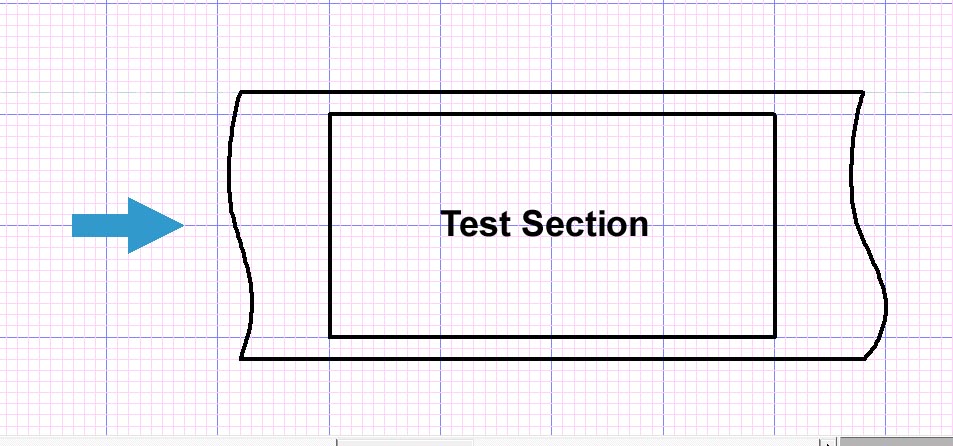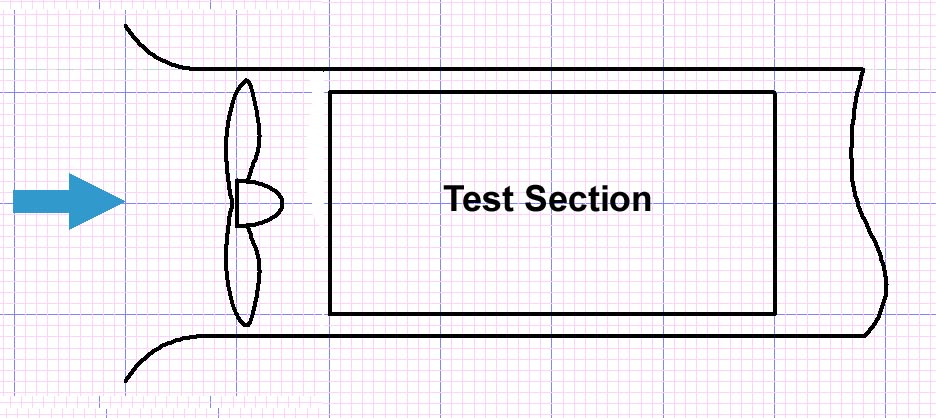|
"Project to "build" a PhET STYLE WIND TUNNEL SIMULATOR Software Engineer/Programmer/Physicist |
||||||||
|---|---|---|---|---|---|---|---|---|
|
Looking for a computer programmer who would like the opportunity to develop a PhET type of interactive simulation (see, PhET page) to model a wind tunnel using the salaphysics (salaphysics.com) model of air flow.
The PhET source code has been made available and can be found on the PhET web site. The PhET team has also provided other resources. For example, here's a link to a "getting started" video: watch PhET Getting Started video I am not (nor want to be) a software programmer. So, I must rely on the competence and expertise of those who are able to write this sort of application.
salaphysics model for how air moves First, a brief explanation of the salaphysics model for air flow (will consider, "air flow" for this case since most wind tunnels operate in Earth's atmosphere and thus use air). The model is based on a density gradient within a field of moving air particles. These can be visualized by two pictures:
In the first picture, the distribution of the particles is uniform. While the distance between particles varies, the average distance between them is the same (when the number of particles in the field is large). That means that particles travel the same distance (on average) before striking (colliding with) another particle regardless of what directions the particle(s) are moving. As a result, the particles don't have a tendency to trend in any particular direction.
In the second picture, there is a density gradient to the distribution of the particles. In the example picture, the particles are more dense on the left side of the picture. As the particles move, they have to move further (on average) to strike another particle when moving to the right than those moving to the left. As a result, the particles will trend toward the right.
That's the way the wind blows.
PhET Gas Properties Simulator (and its applicability) A YouTube video of the PhET Gas Properties Simulator can be seen in this video clip: YouTube PhET Gas Properties Simulator video clip As this video clip begins, a gas is injected into an evacuated chamber and begins to disperse (diffuse). The simulation pretty accurately represents what is happening using the salaphysics model but, since the simulation is intended to teach the mathematical relationships between pressure (P), temperature (T) and volume (V), using the formlas used in science and physics classes, little effort is made to explain just how the gas particles are moving or why. The PhET Gas Properties Simulator can be run directly from the Colorado University PhET website. The version available is sort of a stripped-down version of what will be seen in the videos of the PhET Gas Propertier Simulator referenced in this document. But, it will be used to allow you to directly observe some of the features...and limitations...of the simulator. Here is the link to the simulator:
In a simulator, only the most local particles are even considered to exist and their interactions are extremely limited. In the PhET Gas Properties Simulator, There are not even any gas particles outside the chamber at all. When the pump is used to put the gas particles into the chamber, they are not drawn from anywhere. As the pump handle is lowered, they appear, as if by magic, to perform the action needed for the visualization. The actions in the simulator are limited to simple collisions without regard for the nature of those collisions or other physics actions that are known to exist (such as the adiabatic process).
3D Visualization A 3D visualization of the way that gas particles move about can be seen by observing the action in a vintage Bingo machine and can be seen in this video clip: As this video clip begins, the Bingo balls, which have been loaded into the machine begin to be injected into the upper chamber where they bounce around and randomize making Bingo a game of chance. Of course, the Bingo machine is operating in the 1 G gravity field of the Earth so the balls act as they do in that much gravity. But, the air, through a wind tunnel, is also in that exact same gravity field and the air particles move the same way. Just at a different time scale. In the PhET Gas Properties Simulator, the action is presented as a flat 2D visualization using gas particles which are actually much too small to be seen with the eye. So, as with the Bingo machine, are shown as large enough to see. Actually, even if we could see something as small as gas particlesl, we still couldn't see them because their configuration is such that they don't emit light, making them invisible. It's also expected that the wind tunnel simulator would also present in a 2D format but, with the expectation that, with increased computing power in the future, to be able to make 3D modeled wind tunnels practical, giving an even more accurate result. There are a few ways to do this. Just as the 3D effect can be seen in the Bingo machine video, by moving the camera to show different viewpoints of the action, given sufficient computing power, the visualization of the air particles in the wind tunnel simulator, as the simulation runs, can also be varied. Rotating the different axes and zooming the image can give a very credible 3D effect to the eye. And, as happens with the video camera in the Bingo machine video, adding perspective to the simulation can also enhance the 3D effect that is seen.. Of course the initial task is just to get the wind tunnekl simulation running with the air flowing through the tunnel and, in a generally accurate manner, around test objects in the tunnel.. Even so, the programmer should always have, in the back of the mind, extending the simulation to include all the features that will make it as accurate as possible as it relates to the test object being a real object in...not just a wind tunnel (as that just duplicates the errors found in physica wind tunnels) but, as the test object actually acts and interacts with the air in various scenarios where air passes by (over and throught) the test object. That would include the 3D modeling, dynamic interactions between the test object and the air, the mechanism of the adiabatic process, modeling with an expectation that, with time, ever more sophisticated and faster computers will be developed, modeling using other media, such as liquids, gasses in other atmosperes, such as on ohter planets and moons, and even the effedts of things like pollution and other particulates in the air.
Caveats Regarding Math in Physics As we observe and consider physics actions we must constantly be aware that the Universe processes those physics actions as it does and not as we want to believe it does. The Universe accounts for every particle in the Universe and all the interactions between those particles (although not all particles all the time). And, all indications are that it does so with absolute precision. And, it never does it by performing mathematical calculations. In spite of oft-heard claims that "mathematics is the language of the Universe"...It isn't. Mathematics is the language of the mathematicians and engineers and others who believe that mathematics is the language of the Universe. This strong insistence on the notion that math is king can be seen in science and physics classes and in videos on the internet. Here's revered physics teacher, Richard Feynman's take: We can also see this strong insistence that physics be taught mathematically in this video which makes use of the PhET Gas Properties Simulator: There is a growing number of similar videos on YouTube (and elsewhere) on this theme. This one is just a typical example of how the PhET Gas Properties Simulator is incorporated into a science lesson. Of course, the computer programmer is obligated to do everything mathematically. After all, the computer really is just a glorified adding machine. It has no sense of the nature of the steps of the program it is running...like an ox pulling a plow, without knowledge or interest of why.
Building the Wind Tunnel Simulator For generating a wind tunnel simulation, much of the coding is already done. As the gas was injected into the chamber, as shown in the above YouTube video, and after some period of time, the gas particles diffuse to a state where they are evenly distributed in the chamber in a dynnamic visualization of the salaphysics picture of an even density across the field). In the case of a wind tunnel, that even density distribution condition is the state of the wind tunnel before the wind...the air particles,..begin flowing through the tunnel. Since the wind tunnel itself operates in the atmosphere, the air density outside and inside the tunnel are the same. So, the air has no tendency to flow in any particular direction. For modeling the wind tunnel simulation, a density gradient along the length of the tunnel must be generated (or, at least, across a test section in the tunnel where observations and measurements are made). That gradient must be persistently held so the air particles will continually trend (flow) through the wind tunnel as the simulation runs.
In a physical wind tunnel, generating the needed air density gradient means providing some sort of fan or turbine system or perhaps a source of compressed air. In the simulation, it's only necessary to mathematically increase or decrease the number of particles along the length of the tunnel, to establish the density gradient, and then allow the simulation to run (as can be seen in each of the example PhET Gas Properties Simulator video clips referenced in this document). While it's possible to simply have air particles matgically appear at the intake side of the wind tunnel simulator (as occurs when the pump handle is actuated in the PhET Gas Properties Simulator), it's better to include air around the outside of the wind tunnel which can be "drawn in". Likewise, having air outside the wind tunnel allows the air particles exiting the tunnel to be more accurately modeled and visualized. When the air particles outside the wind tunnel are depicted as representing the atmosphere at large, a sufficient number of them must be included to at least reasonably accurately simulate actual air flows into and out of a physical wind tunnel.
By including a few particles of a different color, it will be easy to observe the movement of the air particles through the test section of the tunnel (eg: how the particles trend). It's especially important to be able to visualize the air flow around objects in the test section of the wind tunnel simulator. Since the major source of error in physical wind tunnels relates to the notion of "relative wind"; which is the erroneous belief that the effect of flowing air past an object at some speed is the same as movinjg the object through the air at that speed. Being able to see how the particles behave with static objects (representing such thangs as buildings and billboards and other objects, in the test section, that are known to be suseptable to wind loads) vs moving objects (such as aircraft and projectiles that are dynamically interacting with the air) is an important factor in the design and presentation of the wind tunnel simulator.
Some of the work of building that air density gradient has also already pretty much been done. In fact, in the PhET Gas Properties Simulator, it's done a few ways. Changing Chamber Size As the walls of the chamber are moved (to decrease or increase the volume), the gas particles near the moving wall move closer together (as volume decreases) or further apart (as volume increases). It's easer to see that action as the chamber volume increases. When the wall is again stationary, the gas particles diffuse back to an even distribution in the chamber. That action is a good visualization of the salaphysicss description of how air moves. In that video clip, the volume is changed and the narrator mentions that the temperature increases as the volume decreases and it can be seen that the gas particles are moving faster. But, the video maker doesn't mention any reason why the particles are moving faster (or why they end up moving faster than the little guy was pushing on the wall of the chamber). This same issue crops up in this video clip of Richard Feynman explaining about how the tire pump increases the speed of the air particles, making the pump feel warmer. But, it can be directly observed that Feynman's explanation is wrong. Those are major omissions and errors of what needs to be considered when trying to analyze the physics concepts of what's actually happening. Of course, that relates to the adiabatic process. There are lessons, in the salaphysics curriculum, that explain the salaphysics model of how the adiabatic process works. Too bad that the process behind that is not even mentioned in the video. Too bad but not surprising since the PhET Gas Properties Simulator is only interested in supporting the mathematics of the relationships pf P, V and T as taught in science classes...by teachers who are only interested in teaching the approved science curriculum. Escaping Gas In the same video showing the effects of changing the chamber size, you can note that there's a lid on top of the chamber. When there are gas particles in the chamber and the lid is opened, the gas particles begin to escape. gas particles escape through opening Since there are no particles outside the chamber in the PhET Gas Simulaor, there's always a maximum density gradient between inside and outside the chamber. You shouldl be able to see that there's nothing forcing the particles out of the chamber (no "pressure" pushing on them). The particles are continuing to do exactly the same as before the lid was opened and by the process of the random reflections of the collisions, move themselves out of the chamber, through the opening. A dynamic visualization of the salaphysics model of how the gas particles move (how the wind blows).
Adding gravity In the PhET Gas Properties Simulator, there is another way that density gradient is created. By adding gravity to the simulation, there is a density gradient from top to bottom of the chamber. This can be seen in this PhET Gas Properties Simulator YoluTube video: Of course, inside the closed chamber, the density of the gas particles increases as you get closer to the floor of the chamber. In the video, it's noted that this corresponds to the density of Earth's atmosphere increasing as you get closer to the surface of the Earth. But, regardless of how the density gradient is produced, if that density gradient is turned 90o, the gradient will be horizontal along the length of a wind tunnel (in a wind tunnel simulator). Because the end of the tunnel is open, as long as the gradient persists, the air particles will continue to flow, creating the "wind" in the wind tunnel.
The Adiabatic Process The adiabatic process was briefly mentioned earlier and is a real issue when modeling a wind tunnel simulation. It's poorly understood and so is explained, as all poorly understood things are in science...mathematically. There is a process the Universe uses to change the speed of particles that doesn't directly relate to the direct exchange of momentum with other partticles. In the following video clip, the adiabatic process is demonstrated using the PhET Gas Properties Simulator, with a "throwaway" explanation...that is, an explanation that explains nothing: In the simulation, you can notice that as the volume is decreased the temperature increases; the gas particles are moving faster. As the volume increases, the particles are moving slower. You can also notice that there's no direct relationship between the speed that the little guy is pushing on the wall of the chamber and the speed change of the gas particles. Even though the PhET Gas Properties Simulator is not attempting to explain the adiabatic process, the wind tunnel simulator must address it and get it right. As a good teaching tool, it's not enough to just make the explanation fit some mathematical formulas. It must explain the mechanism of the adiabatic process as it models it. There is a salaphysics theory of the nature of the adiabatic process and, unless a good argument can be made to not use it, it's expected that the salaphysics modeling of the adiabatic process will be used for the wind tunnel simulator.
Initially, the only task will be to get the wind tunnel simulation working. Build the graphic showing the wind tunnel and get the air flowing through it. That will be the first task. But, that's just the start of the process. Then it becomes necessary to put various objects into the test section and observe and measure the interaction of the object and the air flow...both with a stationary object (as when modeling wind loads on various structures and surfaces) and with moving objects (such as aircraft and projectiles that are moving through the air). If the wind tunnel simulator is submitted to the PhET team for possible inclusion into their library of simulations, the look and feel of the wind tunnel simulation must integrate well into their library.
In the simulated wind tunnel, only the test section of the tunnel needs to be modeled. Any actions beyond the bounds of the test section only need to be implied. That's similar to the ice and flame and bicycle pump used to cool and heat and pump the gas in the PhET Gas Properties Simulator. They are assumed to be there and able to act as needed to produce the desired conditions to satisfy the mathematical equations, whether they are graphically shown or not. And, as with the PhET Gas Properties Simulator, any graphics depicting those sorts of things in the wind tunnel simulator are just 'bells and whistles'. The real work and artistry of the wind tunnel simulation is in mathematically tracking the various components of the simulation: the tunnel, wind and test objects, in an accurate and meaningful manner. And, to present the data in an understandable and easy to use form. That's gonna be pretty tough! The basic test section is just a window through which the air flow through the wind tunnel can be visualized.

The addition of some sort of graphic (perhaps even an animated graphic) can make the simulator look a bit fancier but, it doesn't really improve the simulation.

Because physical wind tunnels are modeled much like the PhET Gas Properties Simulator (that is, mathematically, based on the pressure model), many of the problems associated with that kind of modeling are found in Physical wind tunnels. Physical wind tunnels are good at generating errors. When measuring wind loads on stationary objects and surfaces, a physical wind tunnel does a good job. It duplicates the force the wind applies and how the wind flows around the objects and surfaces. But, in a physical wind tunnel, objects that are normally moving through the air, are poorly modeled. A car that is placed in a wind tunnel and has the air flowing past/around it, at some velocity, is adding no momentum to the air particles at the front of the car like a car moving down a road does. And, at the rear of the car, the car is not moving away from the air particles and subtracting from their momentum. As the wind speed in the tunnel increases, the errors also increase. Applying a little common sense will tell you why. When a static object (perhaps a car), in a wind tunnel is supposedly moving (because it's moving relative to the airflow, (in fact there's a term for it; it's called, "relative wind")). If the air is flowing slowly (simulating a slow-moving car), the errors are small, because adding or subtracting only a little bit of momentum is almost the same as none. But, when the air flows past the car more rapidly, and the car still isn't adding or subtracting any momentum to/from the air particles, the errors increase. The faster the air flows, the greater the error. Following is a link to a video clip of a wind tunnel test at Mercedes. A large turbine is moving the air past the car, which is stationary in the wind tunnel. And, there are smoke streamers showing the air flow. Wow! It looks very impressive. In the video clip, the automotive engineer tells us that since they even have the wheels of the car turning on small moving belts, they've modeled the wind tunnel test so that, "...we get, uh, almost exactly the conditions we have on the road." This is obviously an automotive engineer who learned about how the wind blows in school science classes.
It is my opinion that some clever programmer, using powerful computers, could make a very profitable business modeling wind tunnels that more accurately simulate airflow conditions than even physical wind tunnels are able to provide.
There is no suggestion, in this initial effort, to build a supersonic wind tunnel simulator. But, there certainly is a need for one and, in my opinion, there is a tremendous business opportunity just waiting for someone(s) who make a business out of wind tunnel simulations. It's not possible to build a physical supersonic wind tunnel. It's not possible to flow air (or any other gas...or liquid...or solid) particles faster than they are moving. So, to build a physical supersonic wind tunnel, some 'tricke' are used. Those tricks are a combination of flowing gasses of different temperatures and makeup into each other and increasing the density gradient (which they think of as a pressure gradient), in an effort to simulate a supersonic or hypersonic flow. As with a physical subsonic wind tunnel, it's not practical to move some object or surface through the test section of a physical supersonic wind tunnel and monitor how it interacts with air (or other gas(ses) at supersonic speeds.. Unfortunately, supersonic flow is also poorly understood. By using the salaphysics modeling of supersonic flow, a more accurate wind tunnel simulator can be 'constructed' than even a physical one can be made. But, because the wind tunnel simulator is just a mathematical model, it's just as easy to model supersonic actions as subsonic ones...so long as the correct concepts of how those physical particles work in nature are understood and incorporated into the simulator design (ie: the computer program models them correctly).
If you've read this far, it's likely that you already have a pretty good idea of whether you think this wind tunnel simulator would be a useful tool and even whether the description given is even valid. And, whether you have any interest or the ability to build such a simulation. If there is an interest, contact me and we'll discuss the details (money, credits, ownership, usage, etc.). Regardless, I do thank you for your consideration.
Lawrence Sala
|

